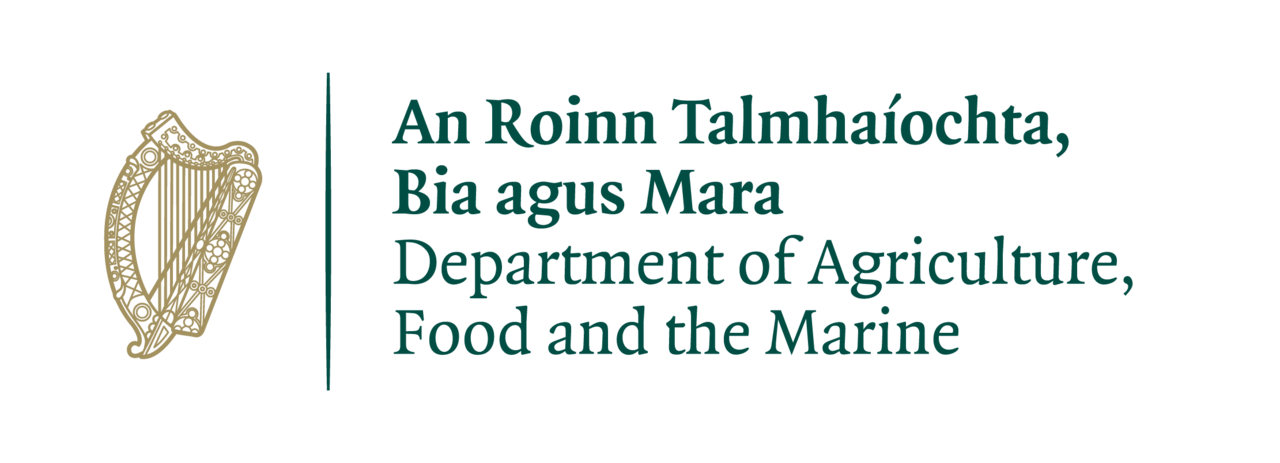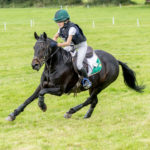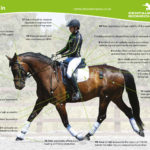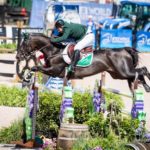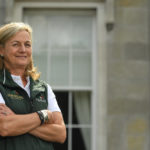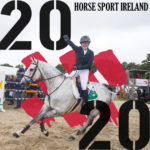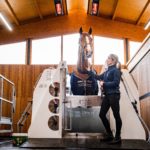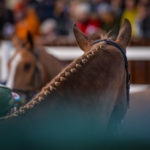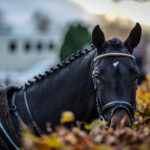Clare-Maria Campbell: Keeping Team Ireland Performing at Their Best
- 20 June 2020, 09:08
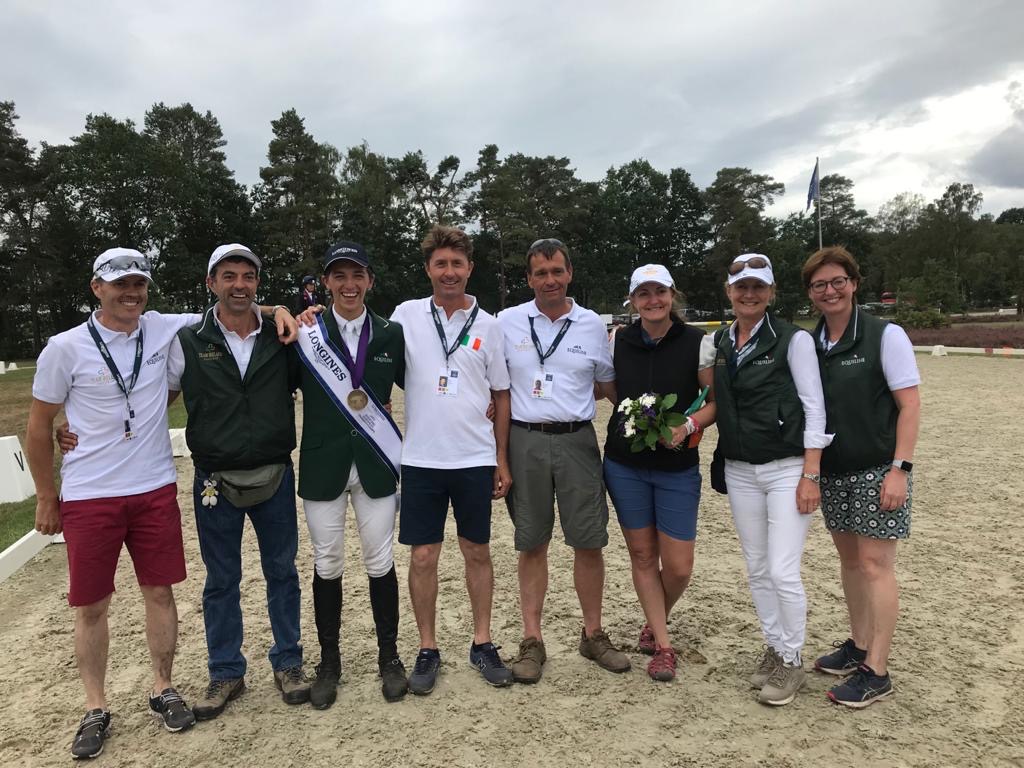
Athlete physiotherapist Clare-Maria Campbell (Pictured far right) at the 2019 European Eventing Championships in Luhmühlen with (L-R) Team Ireland Vet Marcus Swail, Equine Physio, Davide Focardi, European Bronze medallist Cathal Daniels, show jumping coach Grant Wilson, Dressage Coach Ian Woodhead, owner of Rioghan Rua Mags Kinsella and high-performance Director Sally Corscadden
Horse Sport Ireland’s High-Performance Physiotherapist, Clare-Maria Campbell talks to us about how she became a chartered human and veterinary physiotherapist and some of the common problem areas she sees amongst equestrians
Clare-Maria Campbell is a chartered human and veterinary physiotherapist with a degree in Physiotherapy from the university of Ulster and a master’s in veterinary Physiotherapy from the Royal Veterinary College in London. She has her own practice which is based in Coalisland in Co Tyrone where she operates a human clinic two days a week and an equine clinic three days a week. She is also a qualified Pilates instructor and has a keen interest in human biomechanics.
“While I was studying for my Degree, I did an apprenticeship in England with Amanda Sutton who was the Physiotherapist for team GB at the time. It was after that really that I decided I wanted to set up my own business,” Clare-Maria begins.
“I’m delighted to be involved with Horse Sport Ireland and the senior high-performance athletes – they’re a great bunch of people to work with. The Irish athletes are so talented and are right at the top of their game, so at this level it’s the small things that can help give them an extra edge or advantage and that’s really where I come in.”
FUNCTIONAL SCREENING
“Before the season starts, I would carry out a number of functional screening sessions with the athletes. Basically, these screening sessions involve a series of physical tests which determine the athlete’s range of movement, strength of various muscle groups, degree of flexibility, level of co-ordination and balance and can help indicate if there are any areas of weakness.
“We talk a lot in equestrian sport about core stability and what we want is control within a dynamic frame, it’s important that the athlete be able to maintain control while progressing through different exercises off the horse because if there is an issue there it may become more pronounced on the moving horse.”
AREAS TO WORK ON
“The Irish senior athletes had assessments back in October 2019 and again at the end of January 2020 in preparation for the season ahead. All athletes were in very good shape, with some just needing to work a little on their balance. To help them with this, it’s important that the exercises could be easily integrated into their daily routines, as the riders are so busy and often find it difficult to dedicate time to do the necessary exercises. So, for example some of the exercises would include simply standing on one leg and then looking from side to side over each shoulder and then closing both eyes and standing on one leg.
It’s important to get regularly assessed by a qualified professional to help ensure both horse and rider are at their best
“For equestrian athletes in general, I do tend to see that riders tend to be stiff through their left hip/pelvis and can be weaker on their right side. Typically, with the horses I see that there is weakness and more discomfort in the right hind and left fore. That diagonal quite commonly causes issues, but of course these things do depend on the discipline, whether the horse or rider has had an injury etc. There’s a lot of variables, so it’s important to get regularly assessed by a qualified professional to help ensure both horse and rider are at their best.”
COMPETITIVE SUPPORT
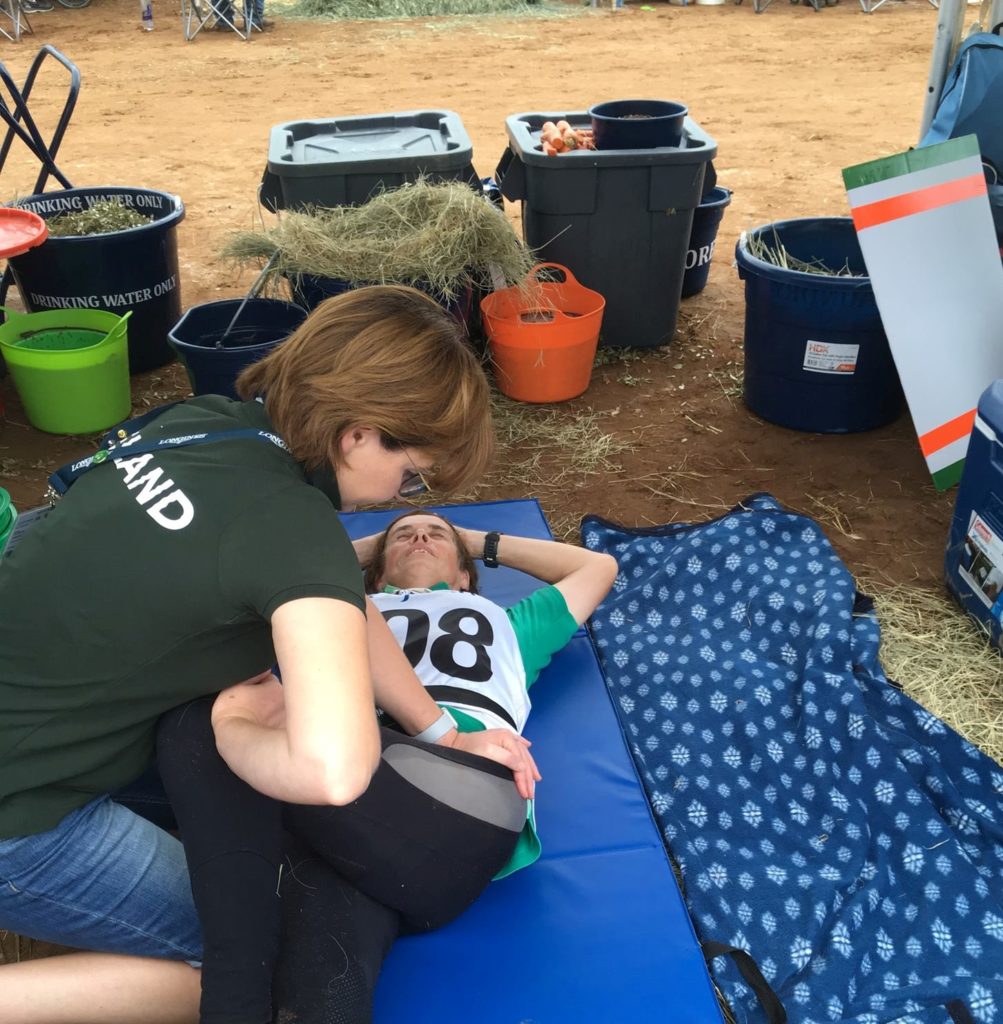
Team Ireland Physiotherapist Clare-Maria Campbell preparing Team Ireland athletes for competition at the World Equestrian Games in Tryon
“I’ve been fortunate to travel with Team Ireland to several championships now including WEG in 2018 and the European Championships last year. At the stage of competition, basically my role is to help increase range of motion again predominantly in the hip and pelvic region to allow the rider sit deeper into the saddle and also to work on activating certain muscles. If any issues crop up, maybe an athlete gets a knock, or they have something niggling that could impact their performance then I would work with the athlete to help calm that down.
“It’s really fantastic to be involved with the teams and I’m really looking forward to what the future has in store for Team Ireland.”
-
Popular

-
Latest







